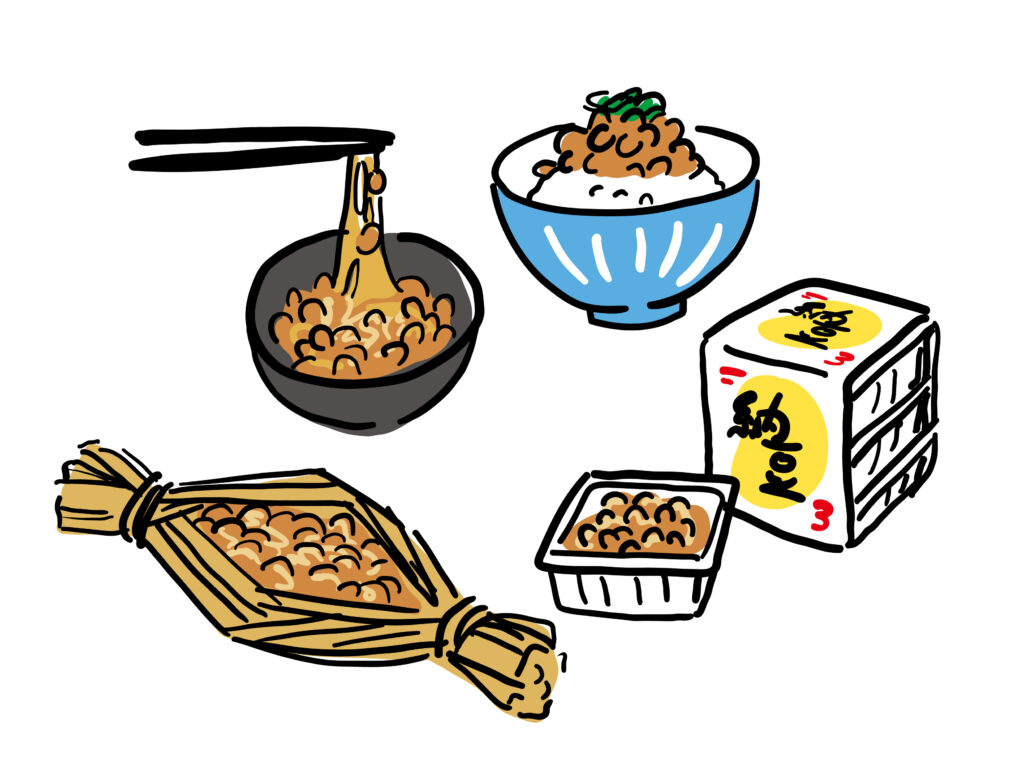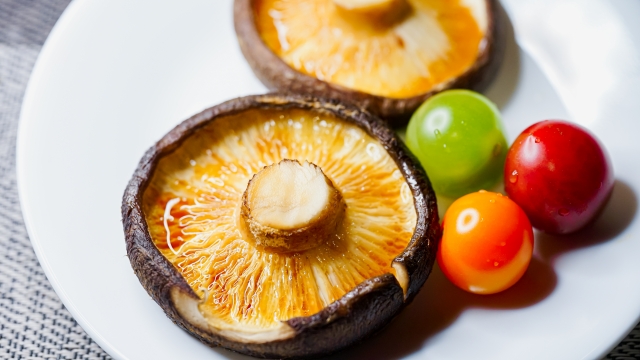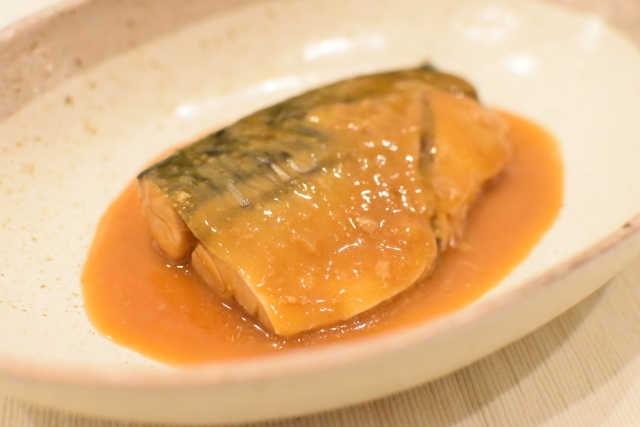Japan's Healthy Food! Top 5 Food Ingredients that Top Chefs Around the World are Watching

Japanese food culture is attracting attention from all over the world, and Japanese healthy ingredients are especially appreciated by top chefs.
In this article, we will introduce in detail the top five Japanese healthy food ingredients that have attracted the attention of the world's top chefs, including the characteristics, health benefits, cooking methods and recipes for each ingredient.
Let's explore the reasons why Japanese health foods are loved around the world.
▼Goandup Picks Click here for recommended articles!
- Required before studying abroad! Goandup Nihongo+, an online Japanese language learning service
- This page introduces services for foreigners who wish to study in Japan or improve their Japanese language skills to learn Japanese online.
- Goandup Salon" community for foreigners living in Japan
- We introduce an online community where foreigners living in Japan can exchange information and interact with each other to support their life in Japan.
- Goandup Study" supports foreigners who want to study in Japan.
- This section introduces study abroad support services that provide comprehensive support to foreigners who wish to study in Japan, from preparation for study abroad to living in Japan.
- Where can I buy a prepaid SIM in Japan? Recommended SIM cards for foreigners are also introduced.
- How to purchase a prepaid SIM and suitable SIM cards for foreigners.
- The Complete Guide to Pocket Wi-Fi in Japan for Foreigners!
- We introduce how to select and recommend pocket Wi-Fi products that can be used conveniently in Japan.
- The Complete Guide to Finding a Job in Japan! Finding a job, changing jobs, and part-time work for foreigners
- This site provides foreigners who want to work in Japan with comprehensive information on how to find a job, recommended job sites, and other information necessary to find a job.
Natto - The Miracle of Fermentation and its Various Attractions

Natto Nutrition and Unique Flavor
Natto is a traditional Japanese fermented food known for its unique consistency and flavor. Made mainly from soybeans and fermented by Bacillus subtilis, it has gained worldwide attention as a healthy food containing a wealth of nutrients such as probiotics, vitamin K2, and Nattokinase.
Natto's Health Benefits and Status as a Superfood
In addition, with the rise in health consciousness, natto is establishing itself as a superfood. Nutritionists and dieticians alike have pointed to its probiotic and cardiovascular disease-preventive effects, and natto is recommended as an essential food for maintaining good health.
History of Natto
Natto has a long history, and records of it can already be found in Japanese books as early as the Heian period (794-1185). During the Warring States period, natto was loved by warriors as a convenient portable food. According to one legend, natto was discovered by chance; after a battle, a straw package filled with soybeans fermented at the body temperature of a horse, and natto was born.
Use of Natto in Cooking
In addition to its health benefits, natto's unique texture and flavor have created a new appeal in cuisines around the world. In addition to being used as a topping for pasta and salads, natto is also gaining attention as a protein source for vegan cuisine.
Famous chefs' love for natto
Renowned chefs from around the world have also taken notice of natto's appeal. The late Joel Robuchon, a master of French cuisine, described natto as "an ingredient that symbolizes the spirit of Japanese cuisine and has a deep flavor in its simplicity. In his culinary philosophy, it was important to bring out the essence of the ingredients, and natto was one of the ingredients that embodied this philosophy.
Natto Kimchi Bowl Recipe
【 Recipe Description]
- Serve hot rice in a bowl.
- Stir the natto with the sauce provided and place on top of the rice.
- Add an appropriate amount of kimchi.
- Top with chopped green onion, nori (seaweed), and onsen tamago (hot spring egg).
- Add soy sauce or mustard to taste and stir to serve.
Dry natto is recommended because it has less odor and less of the characteristic sliminess compared to fresh natto.
▶︎ If you want to try natto firstclick hereCheck the
Matcha - The Door to Health and the Heart of Japanese Culture

Health Benefits of Matcha
Matcha is a type of green tea made from powdered tea called tencha, characterized by its bright green color and rich flavor. It contains a wealth of nutrients, including catechins, amino acids, and vitamins, and is believed to have antioxidant and relaxing effects. Matcha has also played an important role in the Japanese tea ceremony as a drink to enhance spirituality.
History of Matcha
The history of matcha tea dates back to the 9th century when it was introduced to Japan from China. It was used by Zen monks as a means of spiritual concentration and later became deeply rooted in Japanese culture in the form of the tea ceremony. The tea ceremony emphasizes the spirit of "once-in-a-lifetime encounter" and the importance of communicating with others through a single cup of matcha tea.
Sweets using matcha green tea
In recent years, matcha has been incorporated into new sweets and dishes by pastry chefs and cooks around the world, not only for its health benefits but also for its unique flavor. Matcha lattes and matcha ice cream are no longer just an everyday dessert for many people.
Behind the Matcha Boom
Behind the global matcha boom is a growing interest in health and wellness. Nutritionists appreciate the antioxidant potential of matcha, making it an ideal choice for those seeking natural relaxation in a stressful society.
Matcha Latte Recipe
【【Recipe Description]
- Add 1 to 2 cups of matcha powder to the cup.
- Add a small amount of warm water and mix well with a whisk until creamy.
- In a separate container, heat milk (or substitute vegetable milk), whisk, and pour over matcha.
- Adjust sweetness by adding sugar or honey to taste.
- Finally, sprinkle lightly with matcha powder to complete the dish.
There is also a stick-type matcha latte that can be enjoyed simply by pouring hot water.
▶︎ if you'd like to drink it.click herePlease check from
Seaweed - Nutrients from the Sea and Various Uses

Nutritional value of seaweeds and their diversity
Seaweed is known for its high content of minerals, vitamins, and dietary fiber, and is particularly noted for its rich iodine and iron content. In Japan, it has long been used as part of the food culture, and now its value is being reaffirmed around the world as a superfood.
History of Seaweed
The history of seaweed can be traced back to the Jomon period in Japan. Seaweed was an important foodstuff that brought the bounty of the sea to people living on land, and was an important source of nutrition for the ancient Japanese. Seaweed is also deeply rooted in the lives of Japanese people, as it is used in Shinto rituals, festivals, and other cultural events.
Cooking Methods Utilizing Seaweed
Seaweed is used in salads, soups, smoothies, and many other dishes. Seaweed also serves as an important source of protein in vegan and vegetarian diets, and new recipes using seaweed are spreading in restaurants and home kitchens around the world.
Seaweed is changing the world's food supply.
Nutritionists and health food experts emphasize the positive health benefits of seaweed. In particular, fucoidan, a unique component of seaweed, has been shown to be effective in anti-inflammatory and immune system support. In addition, seaweed as a sustainable food source has been touted as an environmentally friendly option.
Seaweed Salad Recipe
【【Recipe Description]
- Rehydrate various seaweeds in water and drain off excess water.
- Add sliced cucumber, tomatoes and avocado.
- Make a dressing by mixing soy sauce, vinegar, sesame oil, and mirin.
- Pour dressing over salad and toss well.
- Finish with a sprinkling of sesame seeds.
Incidentally, if the seaweed is dried and processed, it can be stored for a long time and used easily for cooking.
▶︎ if you want to cook with seaweed.click hereCheck the
Shiitake Mushrooms - Forest Superfood for Health

Health Benefits of Shiitake Mushrooms
Shiitake mushrooms are known for their vitamin D, B-complex vitamins, and selenium. These components are believed to help strengthen the immune system and lower cholesterol, making them an attractive food for health-conscious individuals.
History of Shiitake Cultivation
Shiitake mushroom cultivation has a long history in Japan. In particular, the "shiitake mushroom bed cultivation method" for growing shiitake mushrooms spread throughout the world as an innovation in Japanese agricultural technology. This method has enabled shiitake mushrooms to be grown stably throughout the year, and their delicious taste and nutritional value have been enjoyed around the world.
Diverse dishes using shiitake mushrooms
Shiitake mushrooms add depth to many dishes with their unique flavor and texture. Shiitake mushrooms are used not only in Asian cuisine, but also in Italian, French, and many other international cuisines. Shiitake mushrooms are also used as a meat substitute and play an important role in vegan cuisine.
Health Benefits of Shiitake Mushrooms and Future Possibilities
Nutritionists and health experts are focusing on the health benefits of ingredients such as lentinan and eritadenin found in shiitake mushrooms. These components have been shown to be effective in preventing cancer and regulating blood pressure, and shiitake mushrooms will continue to establish themselves as a health food.
Shiitake Mushrooms with Butter and Soy Sauce Recipe
【【Recipe Description]
- Slice shiitake mushrooms.
- Melt butter in a frying pan and saute shiitake mushrooms over medium heat.
- Add soy sauce and a little sugar and saute until shiitake mushrooms are wilted.
- Add chopped green onions and stir-fry briefly to combine.
Dried shiitake mushrooms are easy to prepare.
▶︎ if you want to cook with dried shiitake mushrooms.click hereCheck the
Blue Fish - Blessings of the Sea for Mind and Body

Health Benefits of Blue Fish
Bluefish are known to be rich in omega-3 fatty acids, which may help reduce the risk of heart disease. These fish, including mackerel, sardines, and horse mackerel, are an essential part of the Japanese diet, and their health benefits are recognized around the world.
History of Blue Fish
In Japan, bluefish has been eaten as an important source of protein since ancient times. In particular, dried fish, a traditional preserved food, is a typical food made from bluefish. These fish also appear in Japanese festivals and annual events, and are important as a food with cultural significance.
Healthy recipes that make the most of bluefish
In modern cooking, bluefish is featured in a variety of health-conscious recipes because of its nutritional value. From simple baked dishes to salads, pastas, and stews, bluefish can be enjoyed in a wide variety of ways.
Health Benefits of Bluefish
Nutritionists and medical experts appreciate the health benefits of omega-3 fatty acids such as DHA and EPA found in bluefish. These components have been shown to support brain health and have anti-inflammatory properties. Eating bluefish regularly has also been linked to longevity.
Mackerel in Miso Sauce Recipe
【【Recipe Description]
- Sprinkle salt over the mackerel fillets and let sit for 10 minutes, then pat dry with kitchen paper.
- Grill mackerel in a frying pan over medium heat, starting with the skin.
- Once browned, add water, miso, sugar, and sake.
- Cover with a drop-lid of aluminum foil and cook over medium heat until the mackerel is tender.
- When the broth becomes slightly shiny, it is done.
You can also easily eat mackerel simmered in miso in canned form.
▶︎ if you want to try canned mackerel in miso sauce.click hereCheck the
summary
Japanese food culture is gaining worldwide attention for its delicacy and nutritional balance. Ingredients such as natto (fermented soybeans), matcha (powdered green tea), seaweed, shiitake mushrooms, and green fish are bringing new life to the health and diet of people not only in Japanese kitchens, but around the world, and will be an important factor in shaping future food trends.
With the growing health consciousness, these ingredients are used on a daily basis in many countries and are driving international culinary trends, with the unique properties of each ingredient providing a new experience not only for health but also for the palate.
Throughout this article, we have explored the impact of traditional Japanese health foods on food and health around the world. By incorporating these ingredients, we can not only improve our health, but also enjoy the diversity of food. We hope that through the recipes presented in this article, you will discover diverse ways to enjoy these ingredients.
Your support will help us!
Thank you for visiting Goandup Picks. Our mission is to provide you with more useful information to show the world what Japan has to offer.
Your support will help us to further enhance our activities, so please support us!






